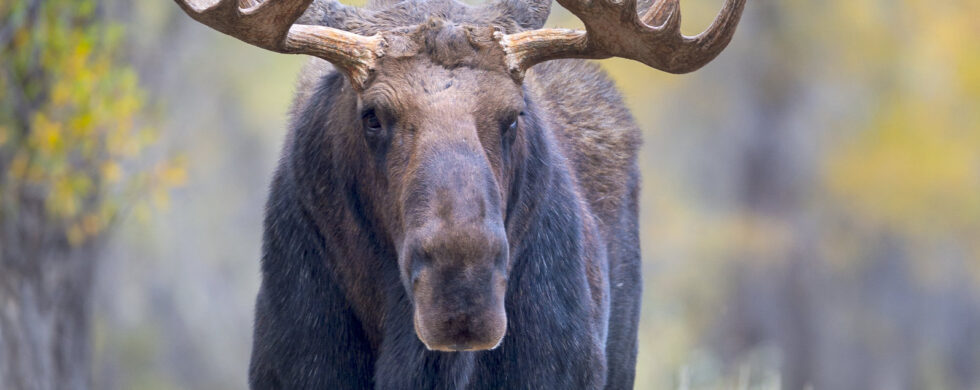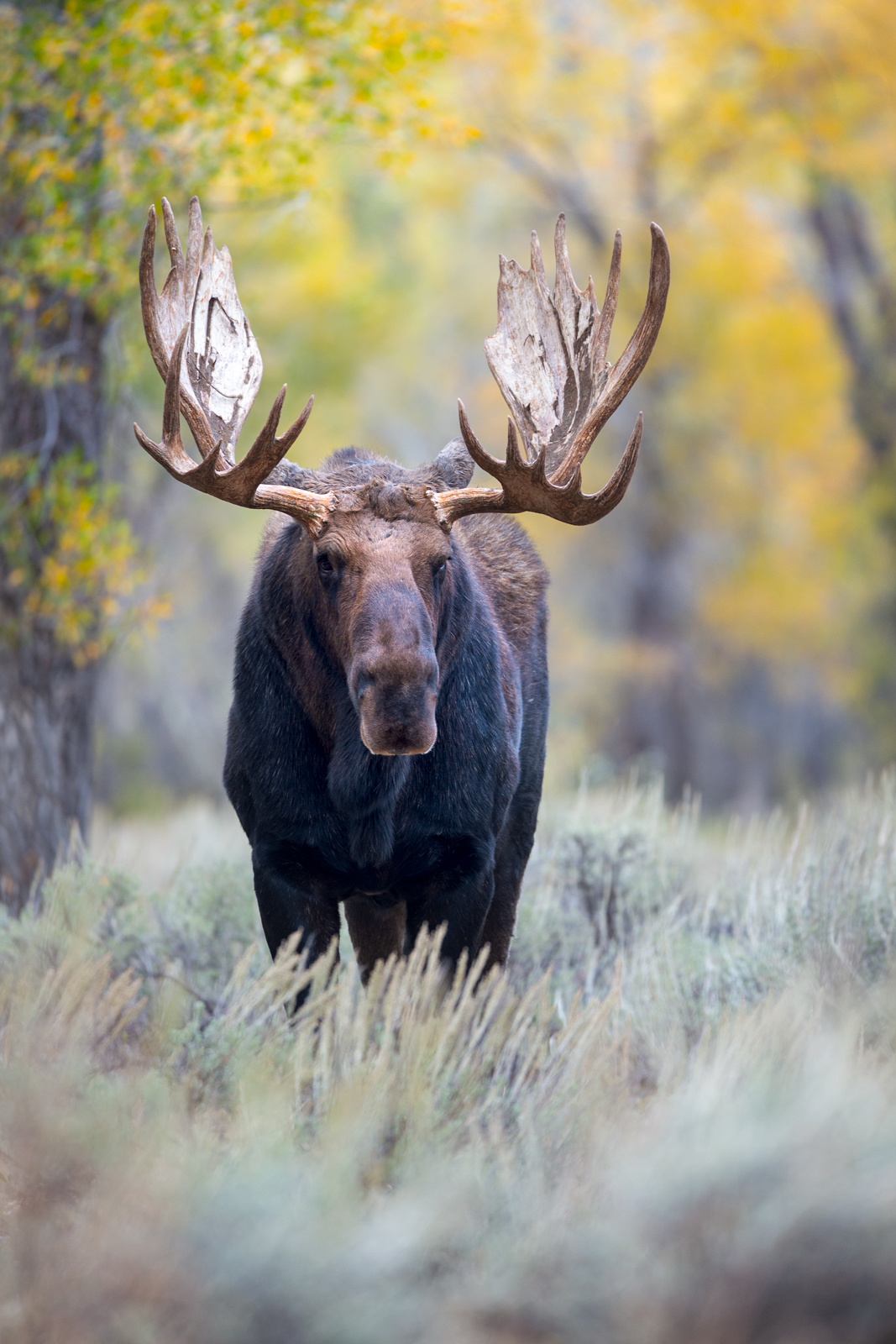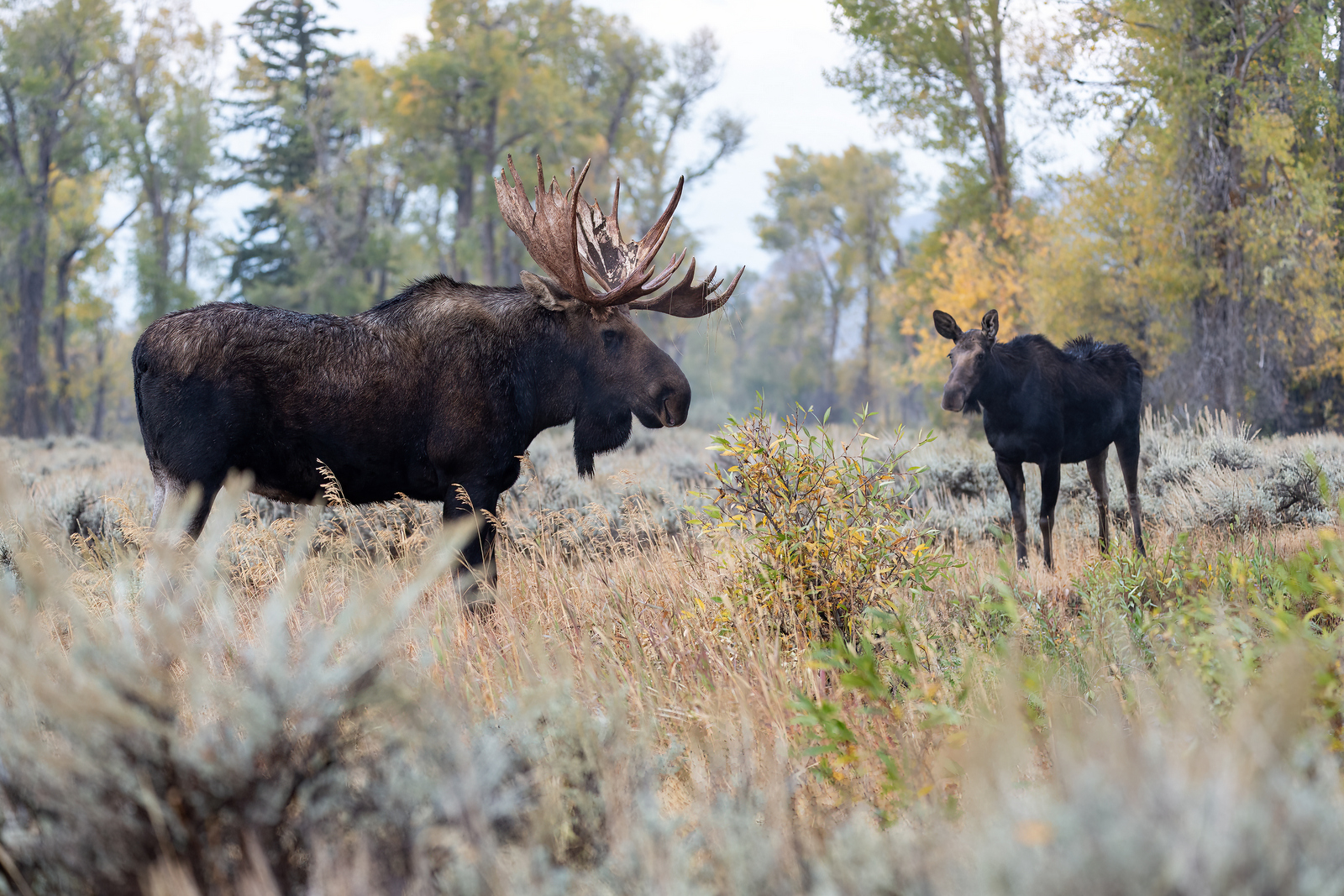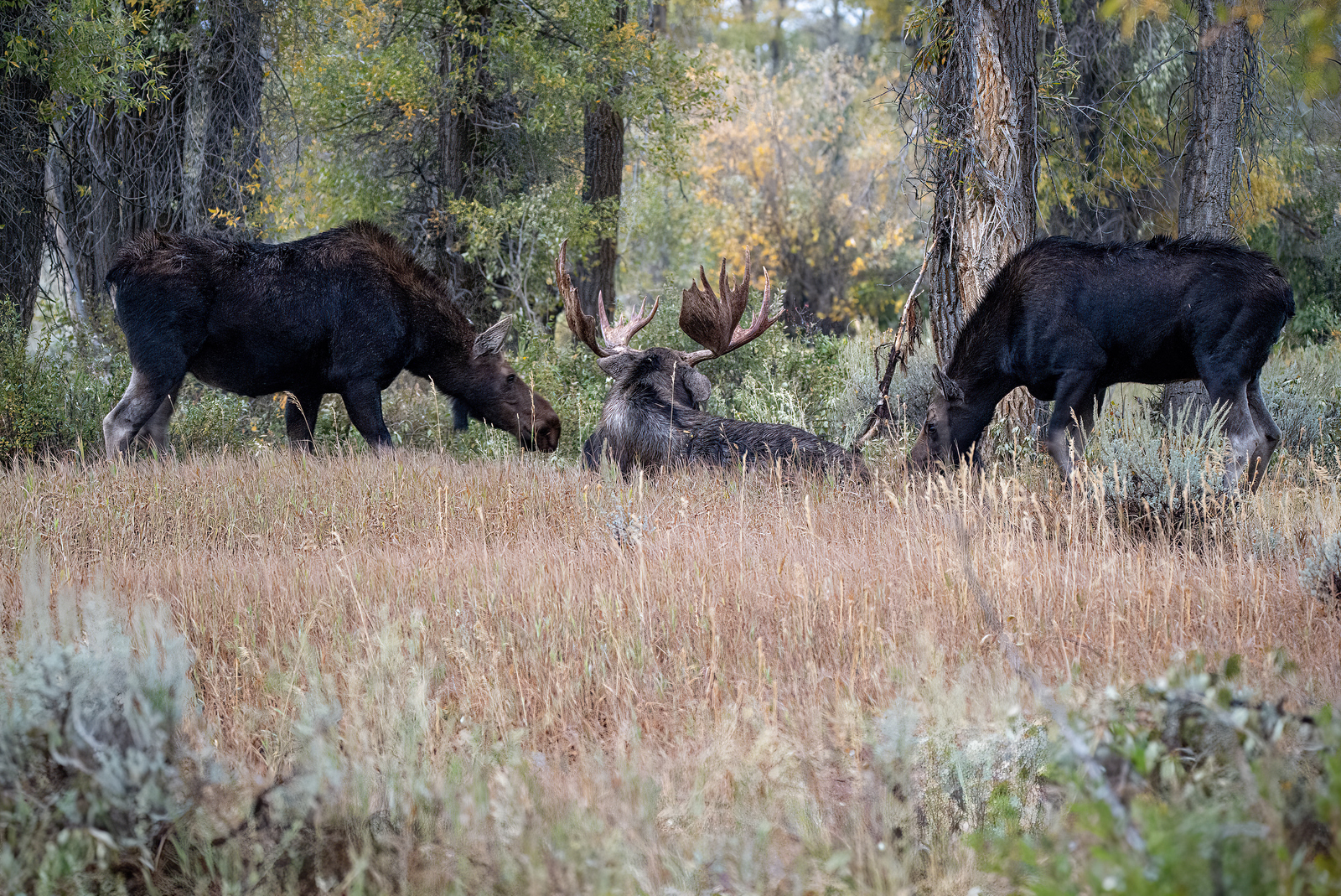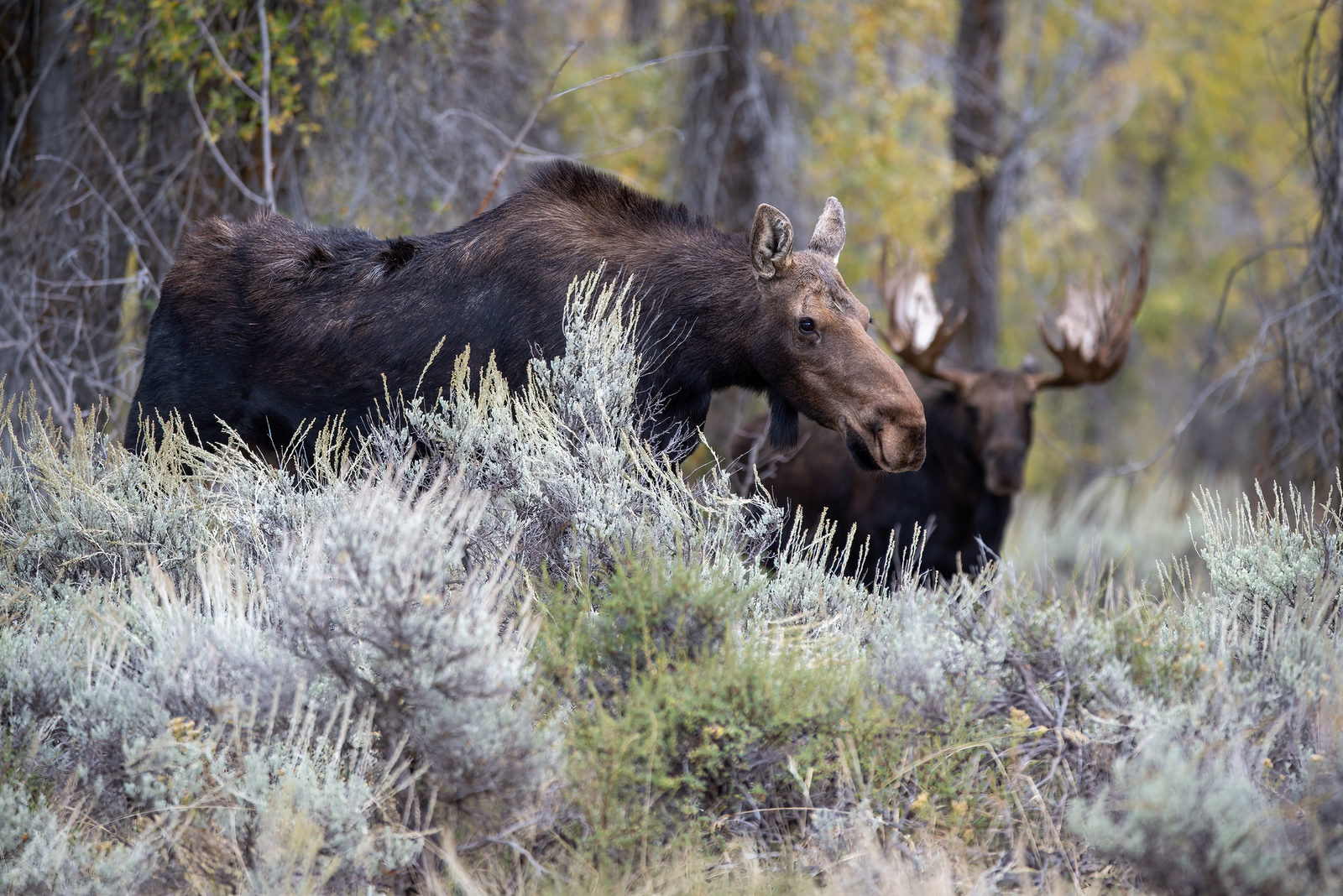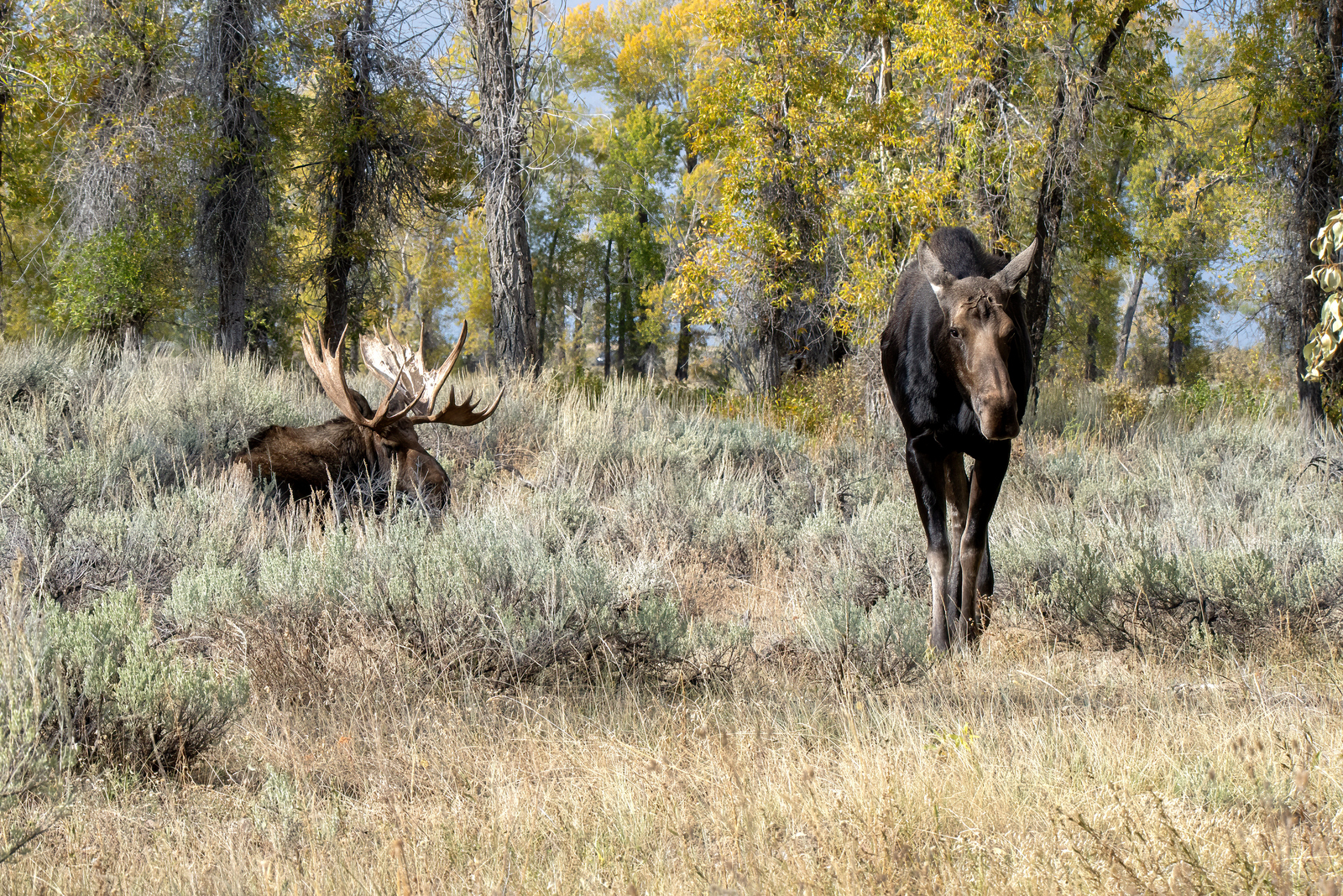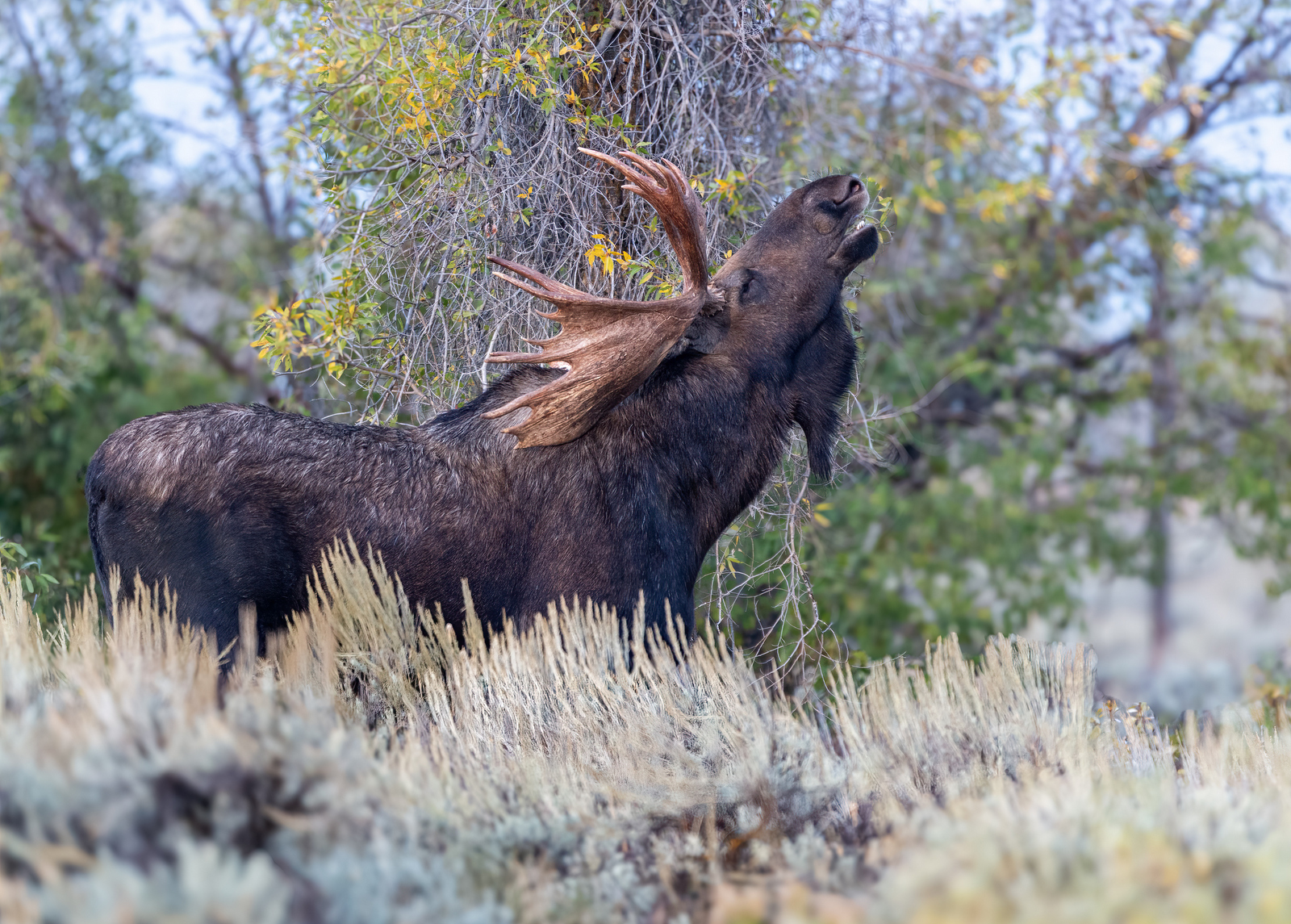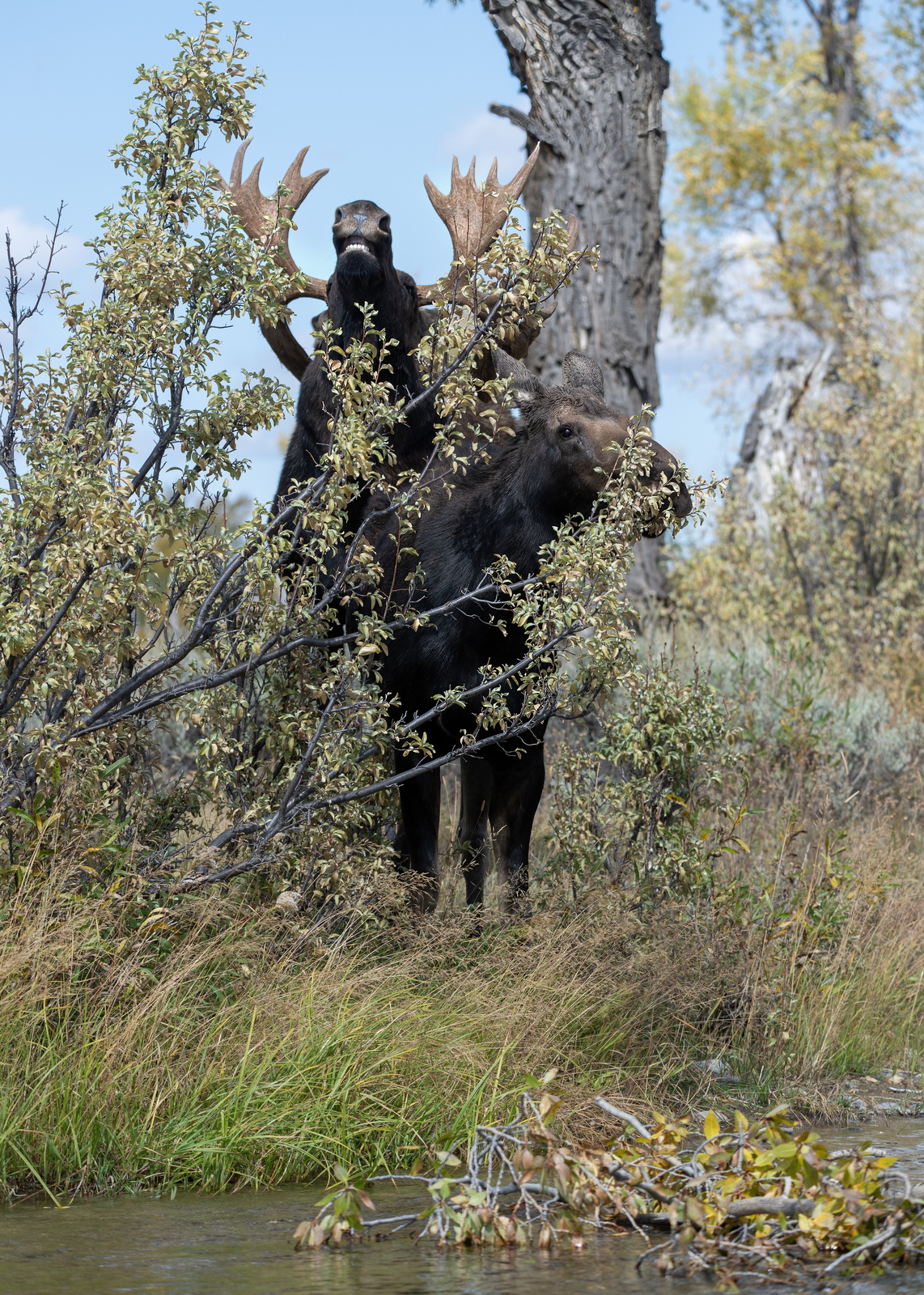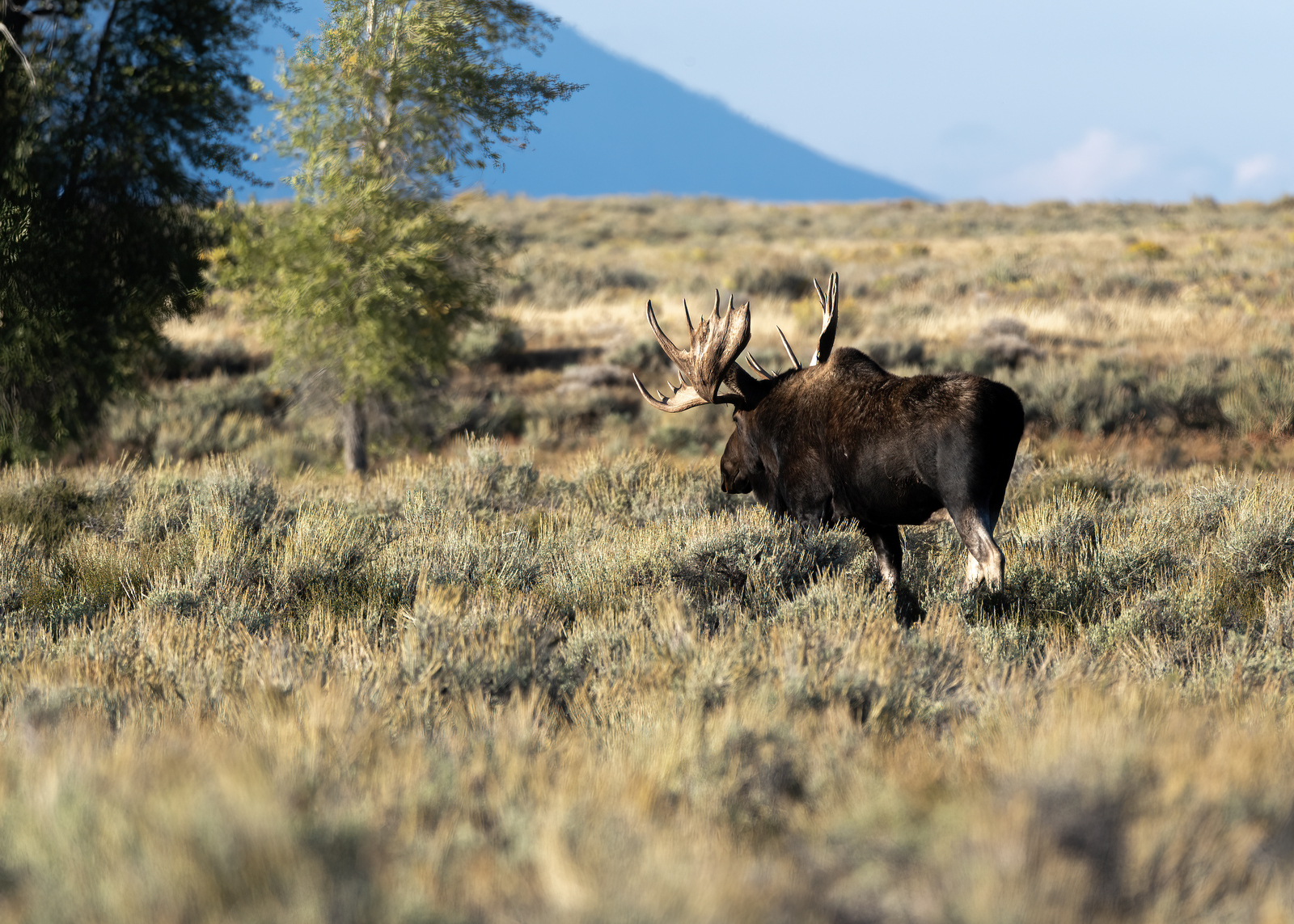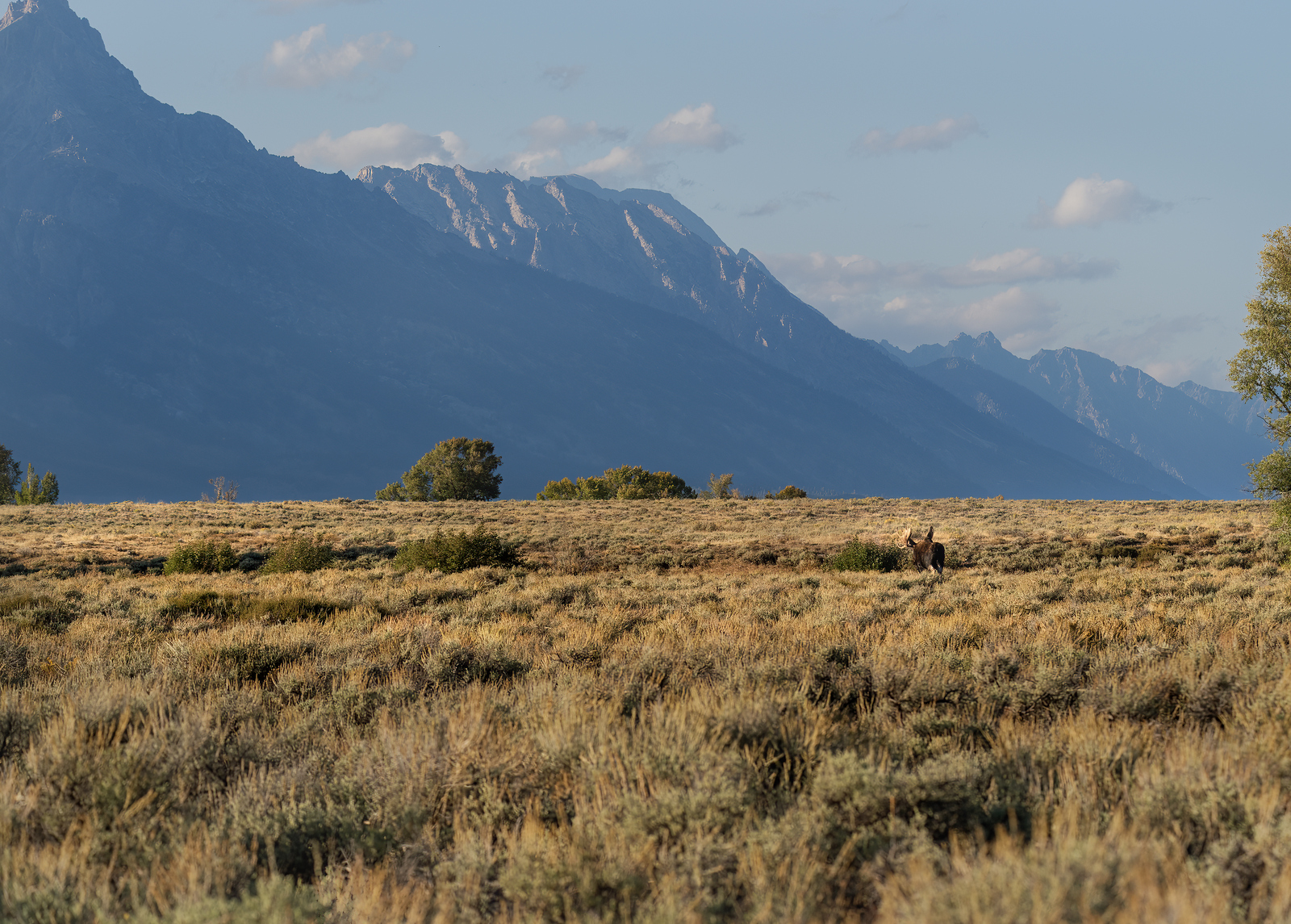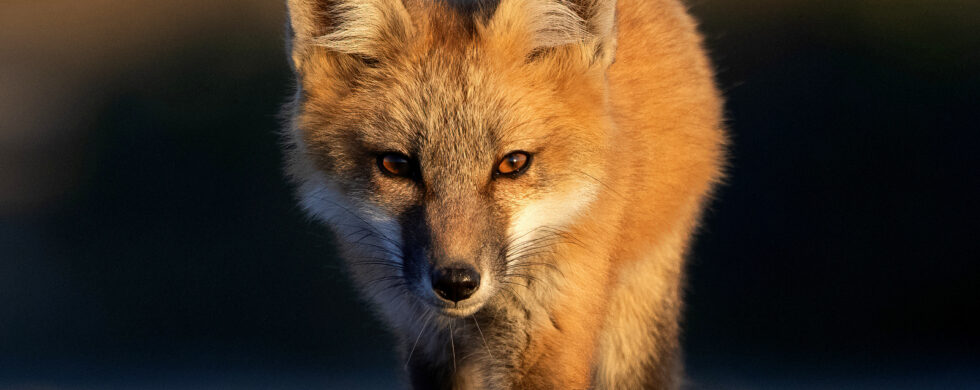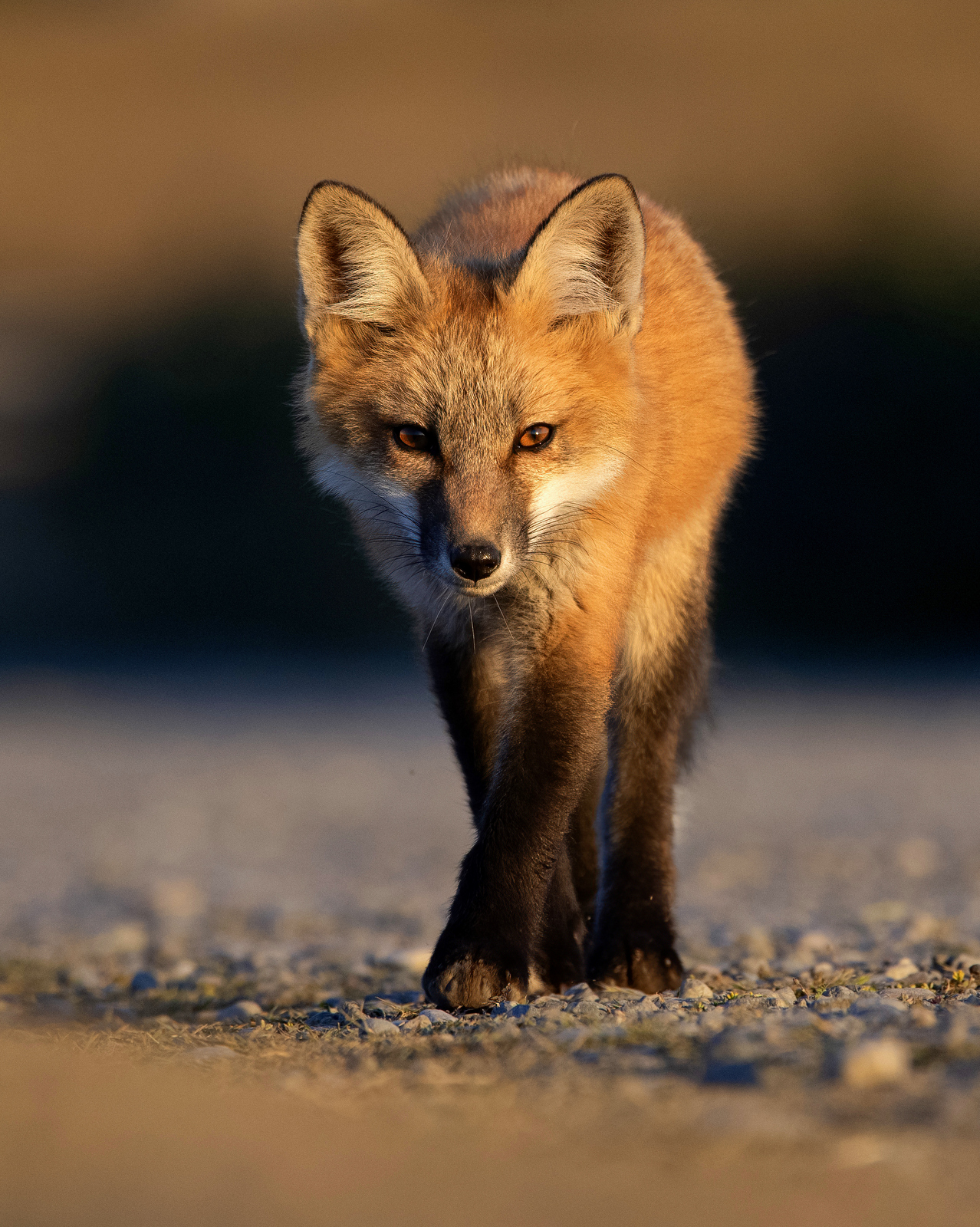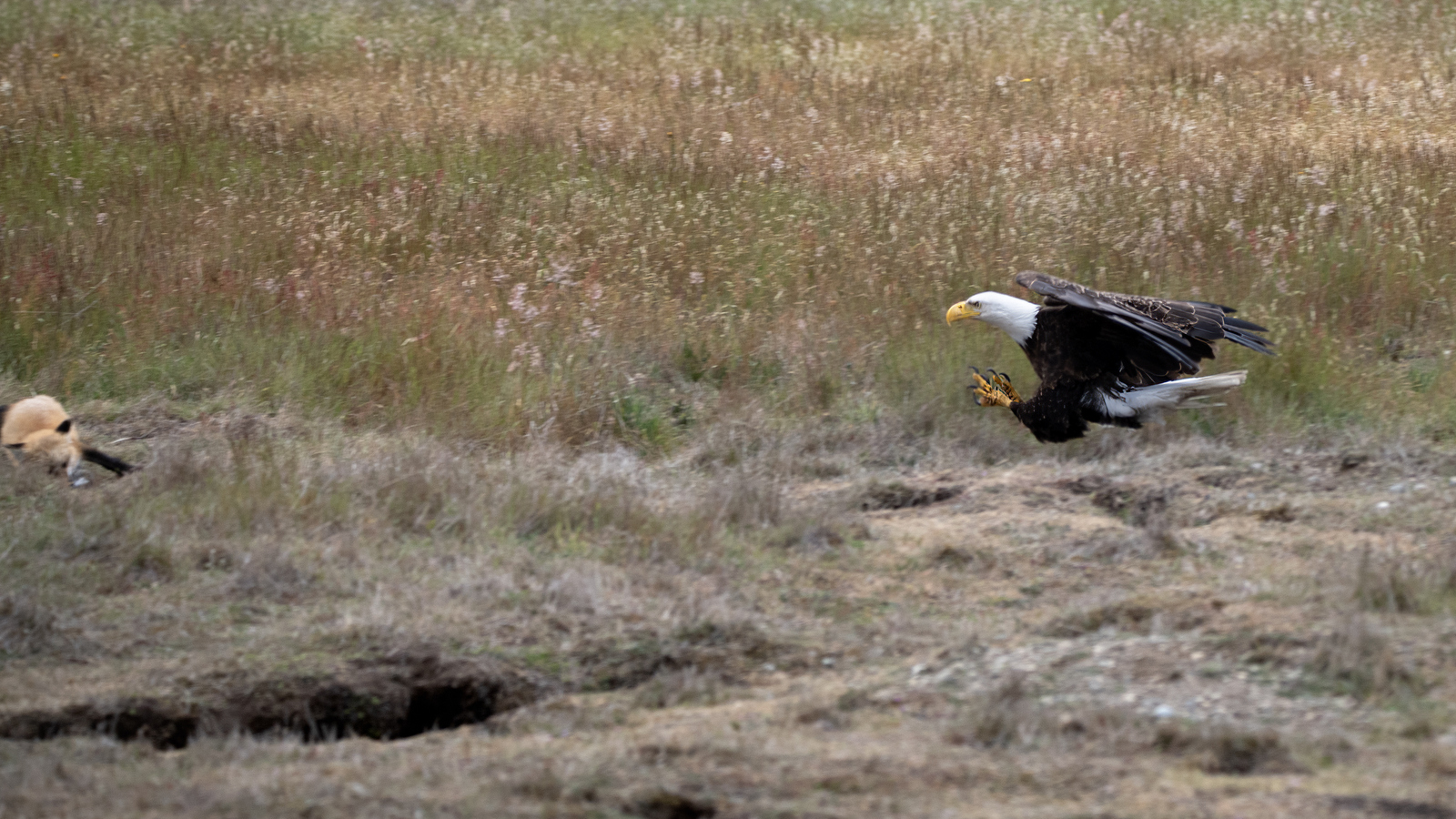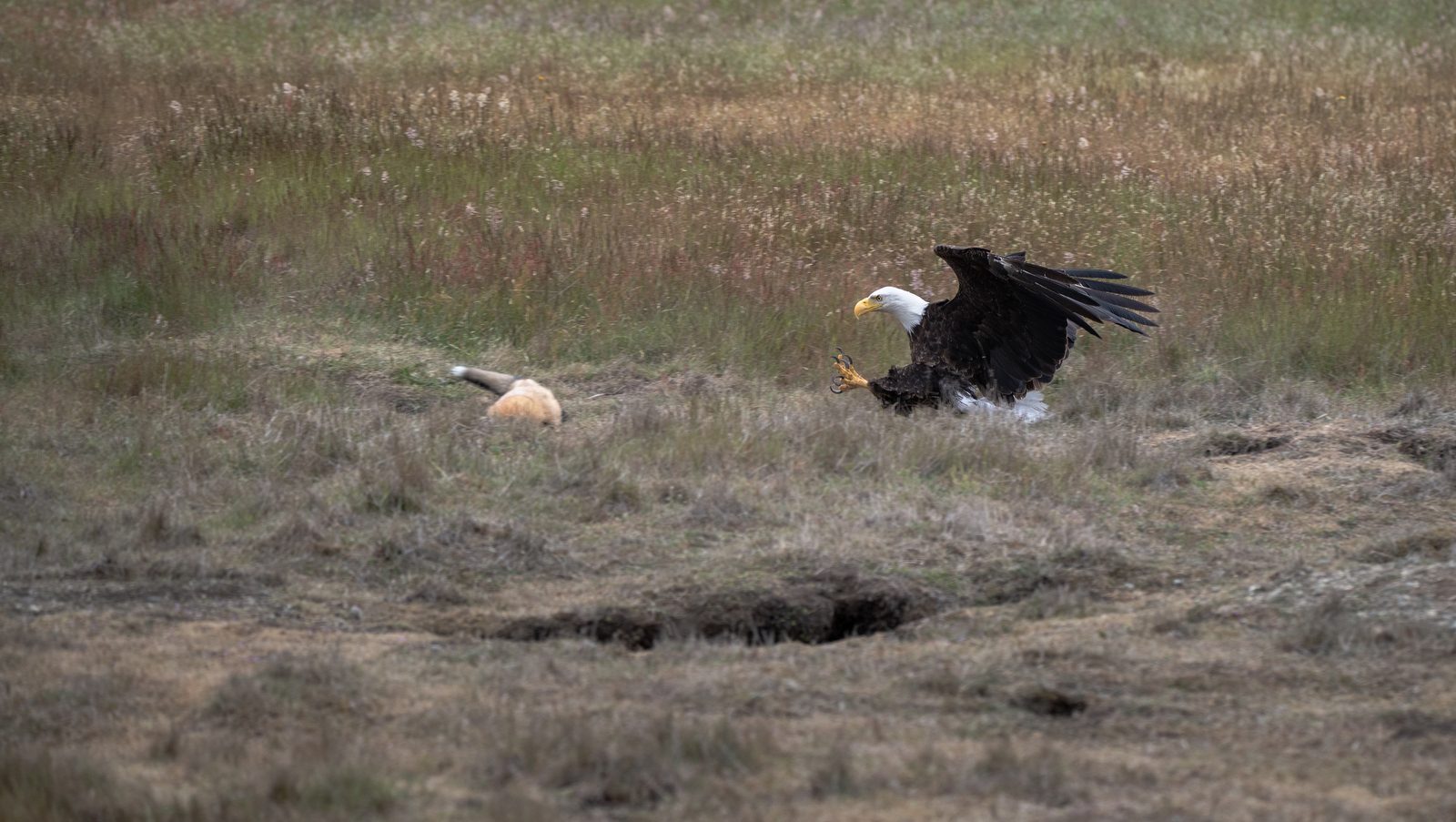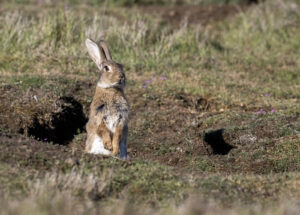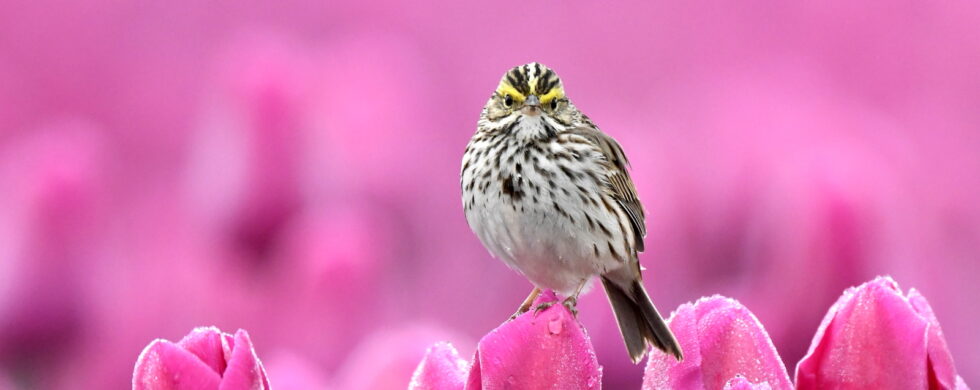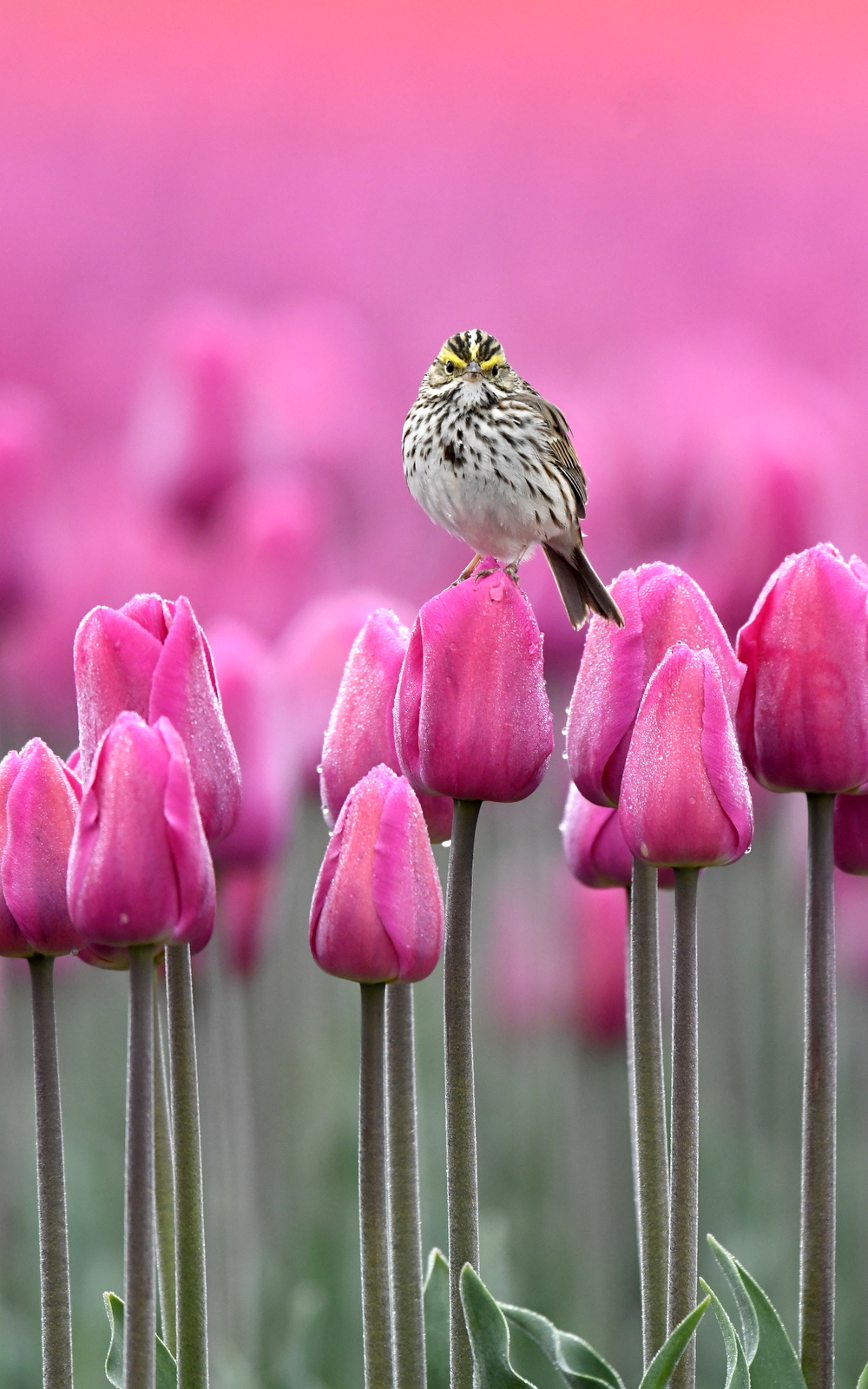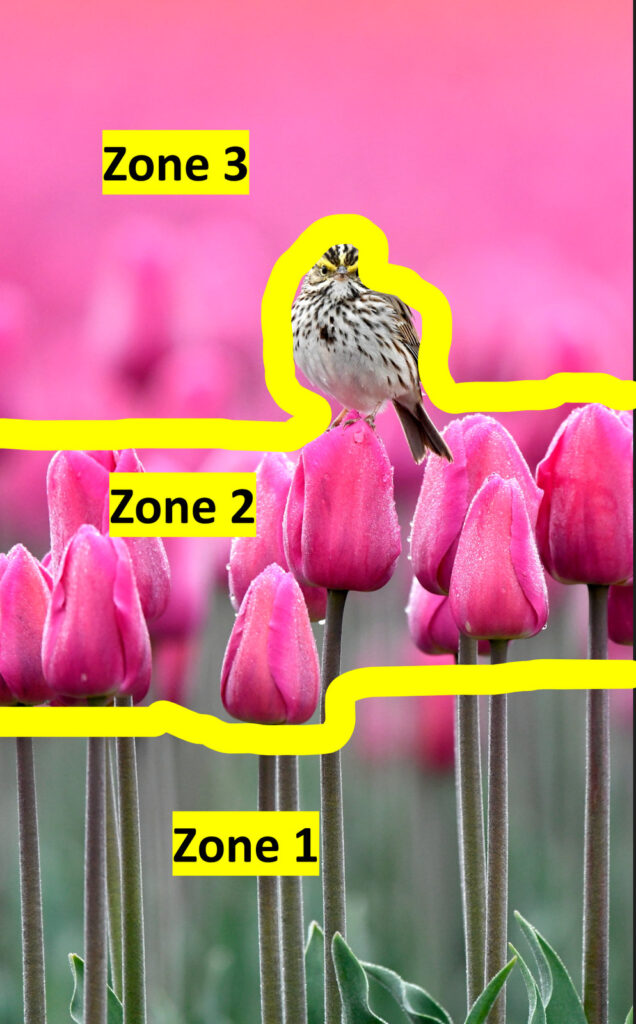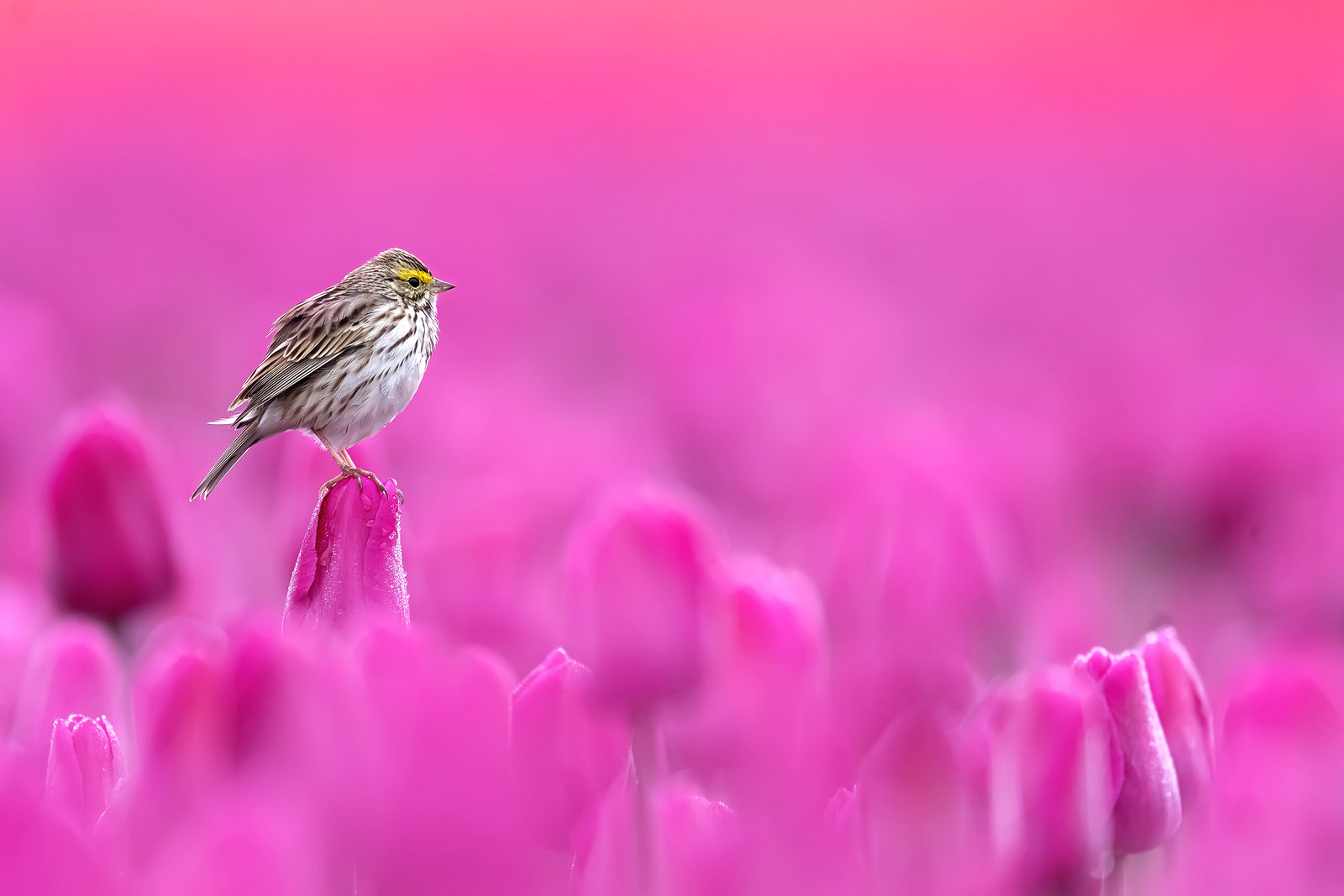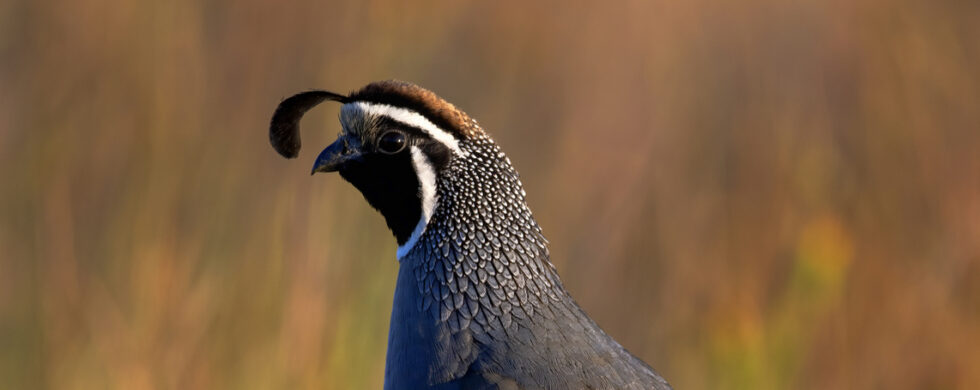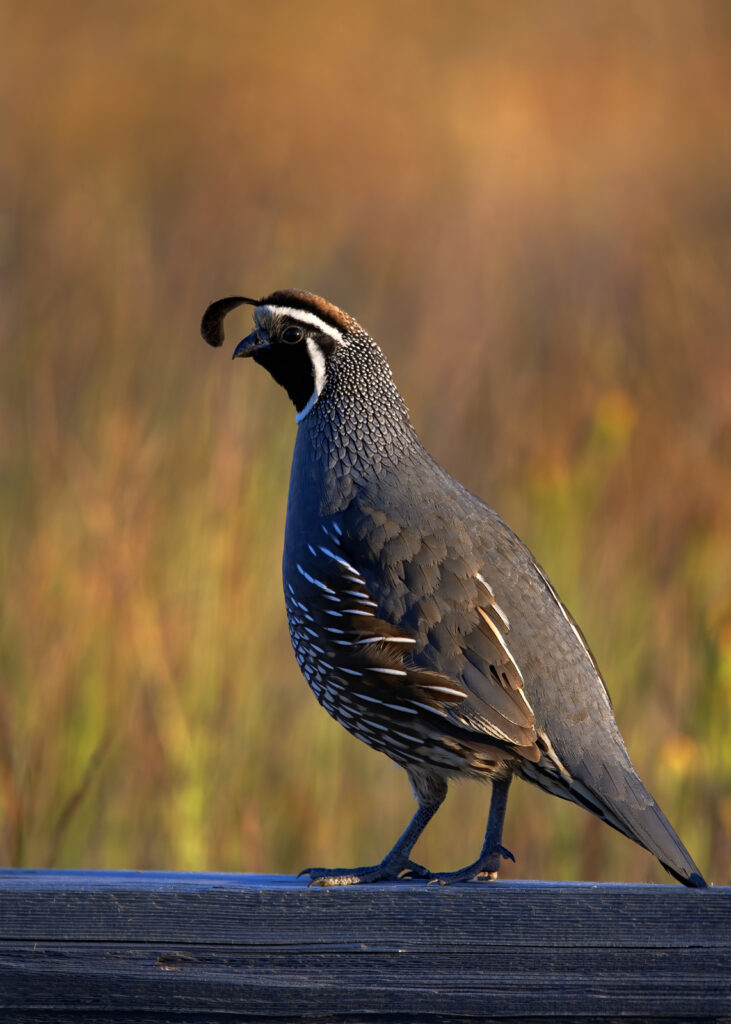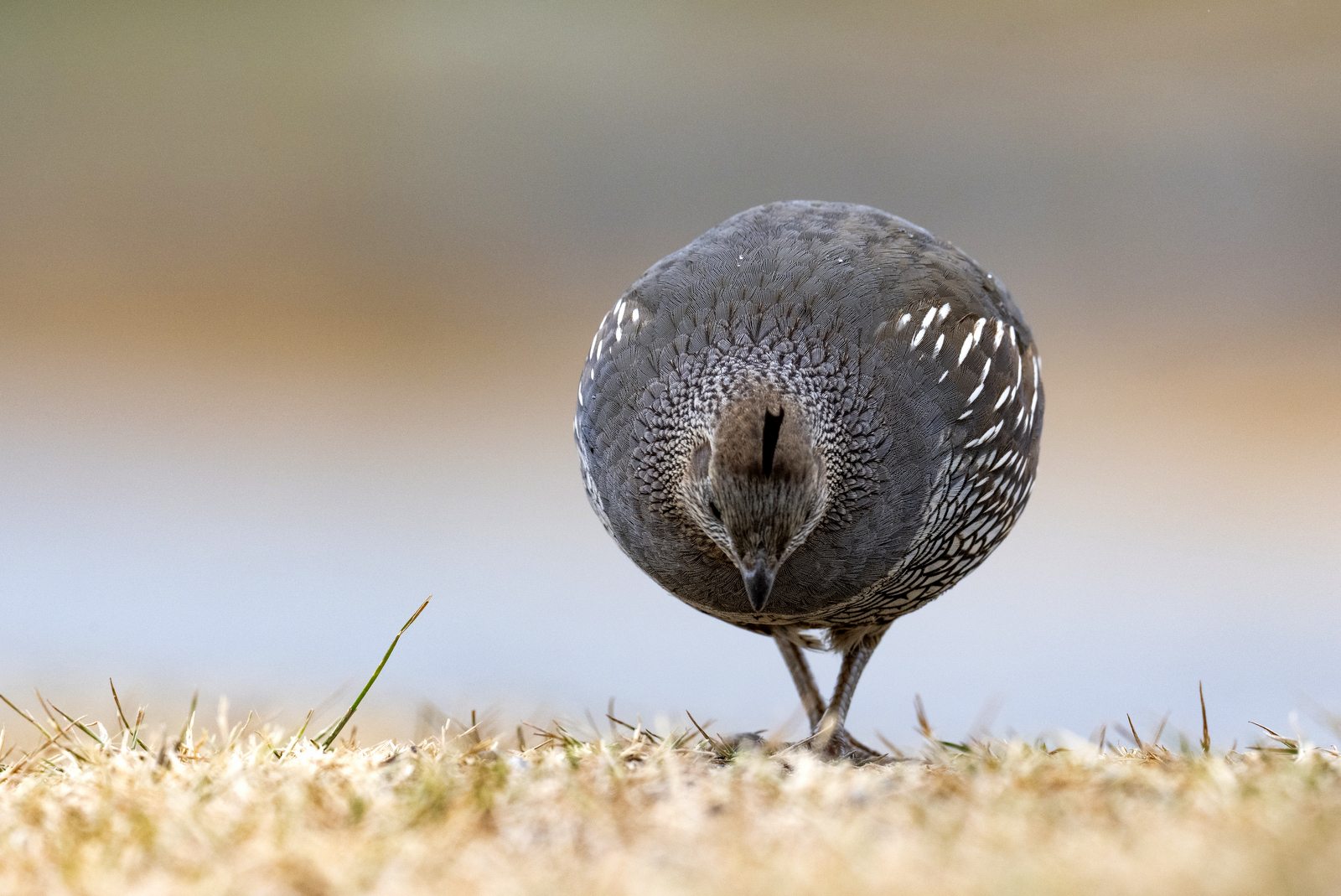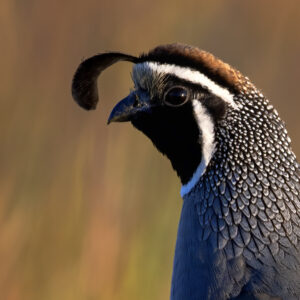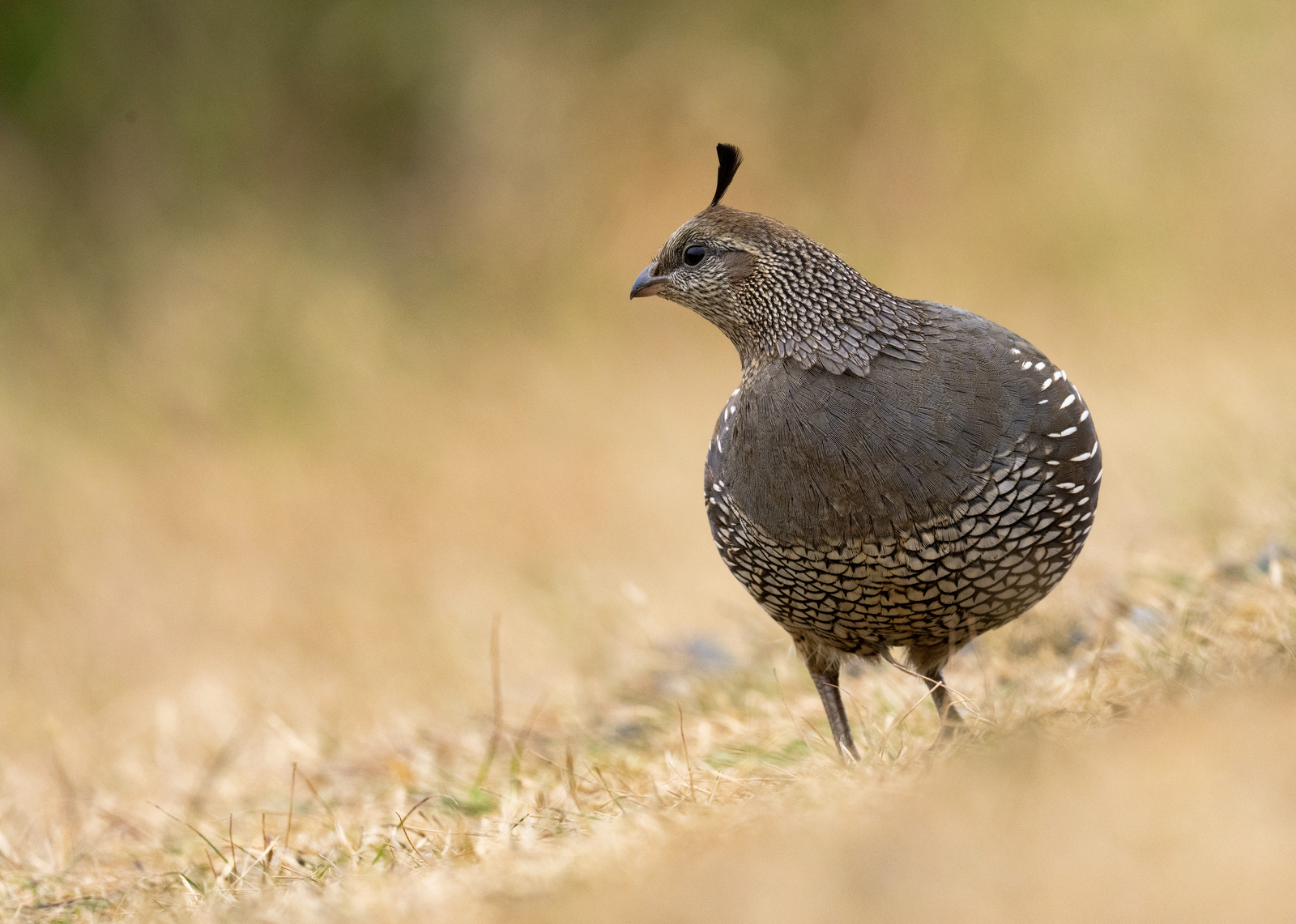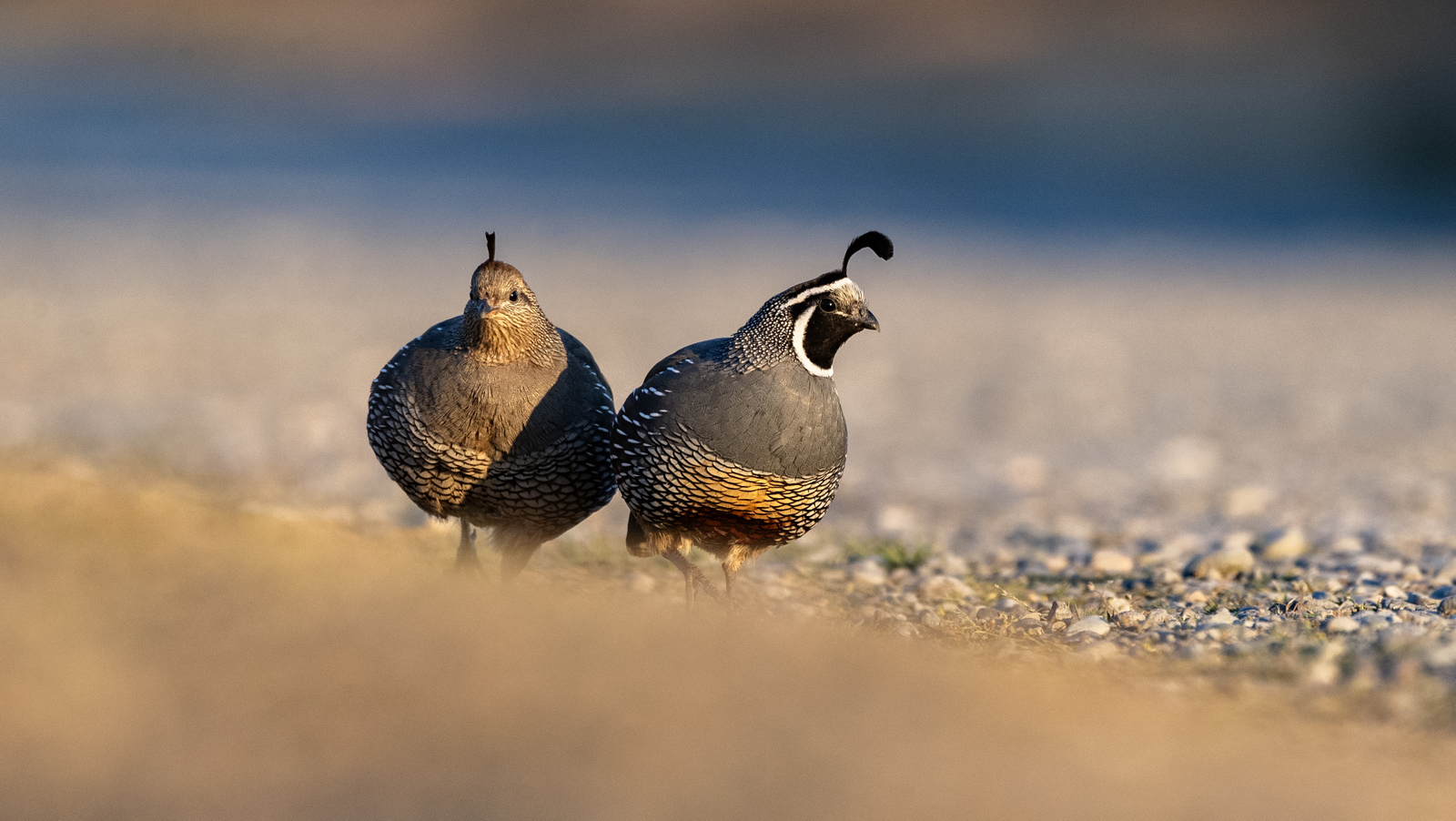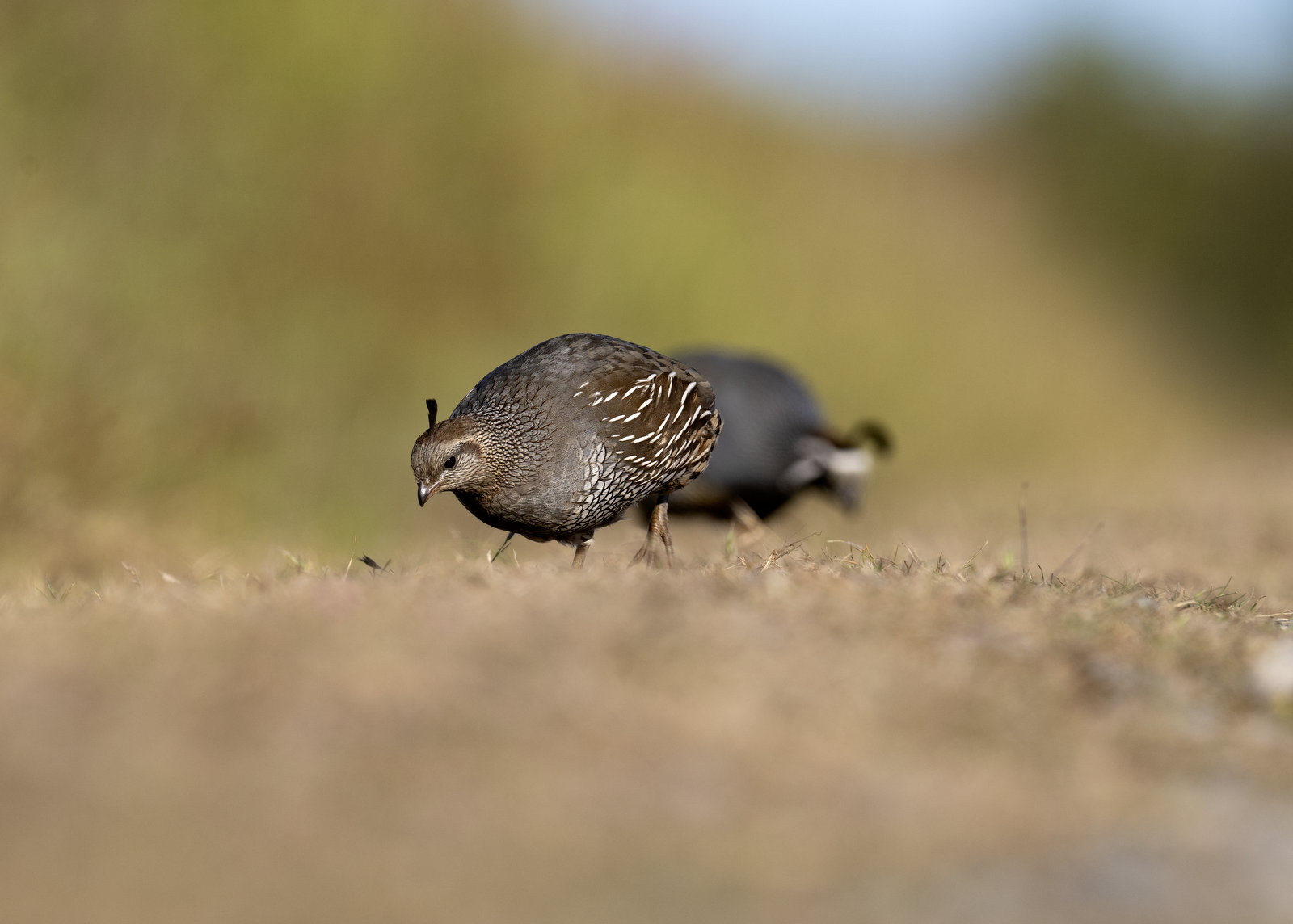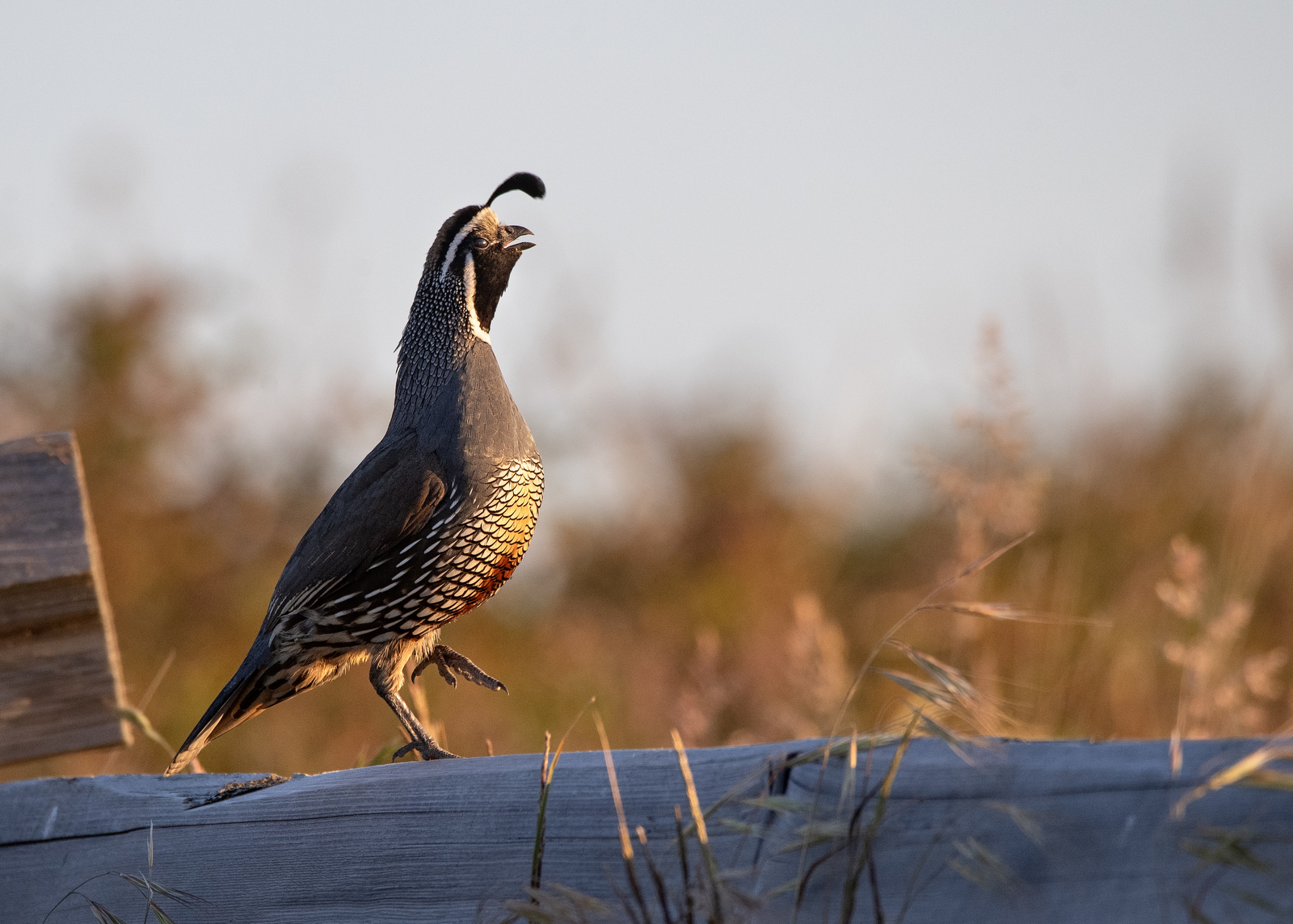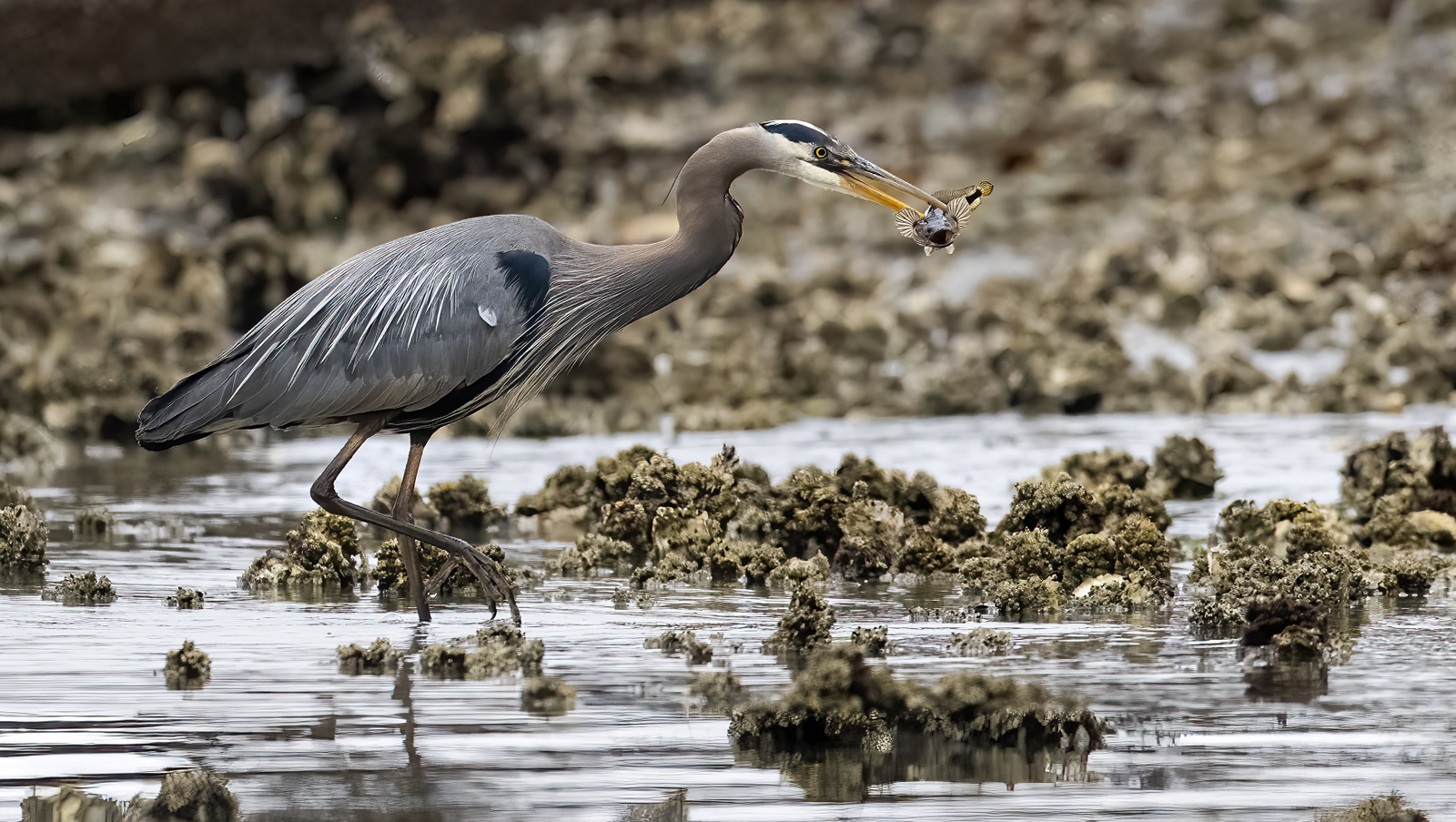30
Shot of the Month – September 2023
If you dig moose, get yourself over to the Grand Teton National Park (GTNP). The moose are not hunted in this park so these massive beasts are very relaxed and have no fear of humans. And from they day they are born they see humans nearby who are fishing, hiking, doing photography, etc. so they really take no notice to us two legged creatures. Park rules require maintaining at least 25 yards distance with the animal – but given how massive these guys are, that is plenty close enough to get wonderful images with typical wildlife photography equipment. When in the field I hike with a range finder so I can always verify my distance to a subject.
I mention all this as the image above was captured in the GTNP after spending 2 full days with this magnificent bull moose during the fall rut in 2019. To get this shot I am lying on my back in a “sit up” position. The low angle allows the bull to tower over me and provides a great view of those fall colors in the trees above.
When we found this bull he had already spent several days courting a cow moose. He was waiting for her to go into estrus.
The lovely couple, playing the waiting game:
This bull moose was one of the largest in the park (top three, easily) and he definitely caught all the cows’ attention.
At one point during day 2 we had two females vying for this rock star!! Usually the male has to do all the work to prove his worthiness, so seeing this “counterintuitive” behavior was a first for me. In the image below the male had just scraped a shallow pit and urinated into it. He then lay down in the pit and rolled around in the depression to cover himself in his scent. As you can see, the females cannot resist it…
Alas, three is a crowd and eventually the bull and the first cow chased the interloper away.
The waiting continued….she went…he followed:
All this waiting can get tiring, especially when carrying a 50 pound set of antlers. Time for a rest:
Any time that the cow would urinate the bull would test the air for pheromones to see if the she had gone into estrus yet.
The Flehmen Response to test the air:
A few hours later….another test:
And then, just like that, it was over. The bull did a flehmen response, apparently still testing negative, and then he just started walking…
I guess he decided that he was tired of waiting and would try his luck elsewhere. It is amazing how much ground those long legs can cover. He wasn’t even running, just a determined walk. And within 15 minutes he had disappeared over the horizon…I tried to run out in front to get some images, but there was no way that I could keep up.
The wonders of wildlife photography. We spent hours and hours with this moose. Although we had long periods of no action it was still fascinating to see the behavior and interactions that few ever have the luck to witness. Hours…..and then short frenzies of photography when there was action. And then just like, over.
It was a heck of ride while it lasted……until next month
Related posts you may enjoy:
Love is in the Air (learn more about the Flehmen response)
More moose images:
Nikon D4S, Sigma 150-600 mm (@550mm), 1/80 sec, f/6.3, ISO 450

